Sorted by date Results 1 - 25 of 56
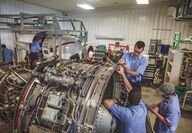
In 59 years of flying, I've seen a LOT of "threats" to General Aviation. Government over-regulation, confiscatory taxes, fuel shortages, aircraft manufacturer bankruptcies, an 80% reduction in the number of FBOs, closed airports, pilot shortages, air traffic controller strikes-ALL were deemed a threat to General Aviation-yet the industry weathered them all. Here's another-a shortage of Airframe and Powerplant (A&P) Mechanics. I like to think that by subscribing to multiple trade magazines, and...
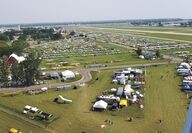
This was my 25th consecutive Oshkosh Convention. The first thing that people ask on my return is "SO-HOW WAS OSHKOSH? WHAT'S NEW?" EAA AirVenture Oshkosh or "Oshkosh" for short has become so large that it's difficult to cover by one person-so Minnesota Flyer's contributing writers were directed to do the logical thing, and divide the editorial responsibilities. I took on the event reporting -the displays-the press gatherings-the forums-and the questions of "what's new?" Contributing writer,...
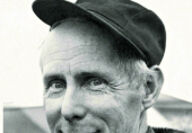
Minnesota Aviation Hall of Fame inductee Clarence Hines of Stanton, Minnesota, passed away on June 26, 2021. He was 96 years of age. Clarence was one of the last "old time FBOs"-he was "all aviation-all the time." He lived on the Stanton airport-east of Northfield-his house was only several hundred feet from the office. Clarence was a crop duster (flying converted Super Cubs), flight instructor, glider tow pilot, "skydiver driver" (parachute jump pilot), and aircraft mechanic. He also farmed...
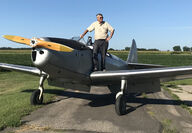
Flying changed and defined my life. I could do things that others my age could not. I had the ability go places and do things they had never dreamed of. Instead of going off to college as my friends did, I got my Flight Instructor Certificate and continued doing ADULT things-including U.S. Army military service. You never know what an action or decision will do to change your life-as it already HAD-but that ability to fly and instruct meant that I would end up as a flight instructor/instrument...
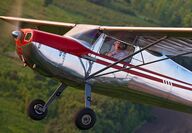
Pilots ask questions of other pilots. They ask, "Where have you been?" "What do you fly?" "What airplane do you like best?" "How many hours do you have?" "What ratings do you have?" "How long have you been flying?" Much like dogs sniffing each other, it is a way to communicate-to find common ground-to look for information that may be of benefit to the questioner. The answers to those questions are short and specific-in my case, it's easy to relay where I've flown lately as almost all flights...
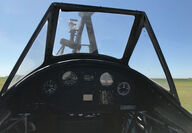
I was in the Army 1966-68-stationed at Ft. Campbell, Kentucky. I had started flying in 1962, and had my commercial and Flight Instructor ratings at 18. United Airlines was handing out provisional hire certificates to Private Pilots at Mankato State University-contingent on an applicant receiving their Commercial certificate. I was looking forward to an airline career-until the buildup for Vietnam. Airlines no longer wanted applicants facing the military draft. I was 1-A, and needed to get the... Full story
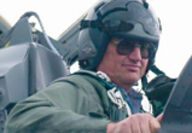
At the beginning of the Coronavirus epidemic in March, my financial adviser and friend, Bob Strommen, sent a letter to his friends and customers. The title was “Hold Fast to What is Good.” Rather than just a note on financial planning and what might be expected in the coming months, it featured tips on how to get through the immediate danger, and what may come later. He offered tips on finance, but more important, how to deal with the immediate problems, and how to deal with the disruption in th... Full story
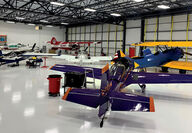
As the former operator of the Faribault FBO, I continue to watch the "goings-on" there. Faribault is a unique airport-a small-town airport located close enough to the metro area to draw a wide variety of pilots and aircraft. It is home to homebuilders, antique aircraft owners, balloonists, a first-rate maintenance shop, a thriving and well-respected rebuilder of antique airplanes, a first-class commercial glider operation, one of the oldest pilot associations in the state, and now, Stein Air.... Full story
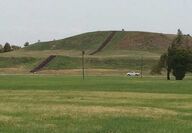
One of the benefits of being a pilot is the ability to see and visit things for yourself. I've managed to visit every state in the U.S., every Canadian Province or Territory, and 83 countries around the world, plus Antarctica, all from the comparatively low altitude of a General Aviation aircraft. In addition to being able to see the sights, I've been able to visit with the people at these sites-and not just the people in major metro areas, as pilots, we get to experience the land and the... Full story
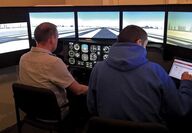
Jim Hanson runs the airport at Albert Lea, MN. He sells and leases airplanes-and among his clients is Accelerated Aviation Instruction-a flight training operation also based at Albert Lea. Jim writes from experience-he has had a Flight Instructor rating for 53 years, and has operated numerous flight schools. Though he mentions Accelerated Aviation Instruction, Inc. (based in Albert Lea) to illustrate points, he does not operate the flight school. Want to start a brawl at the Pilot Lounge? Ask... Full story
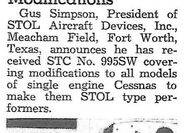
I've been a subscriber to the Minnesota Flyer since I learned to fly in 1963-and I save the back issues. I was cataloging some old issues last week-(and of course, I had to take the time to read what was important back then)! From the May, 1969 issue, I saw the "New type of STOL Modifications" column-and it solved a 42-year-old mystery. In 1977, we purchased the FBO at Owatonna, Minnesota from Thunderbird. Tucked up into the rafters in the attic were two crates with STOL leading edges, and wingt... Full story

There are GOOD Oshkosh EAA Conventions—and there are OUTSTANDING Conventions—but there are no BAD Oshkosh Conventions. There have been Conventions that stand out in our minds—“Did you see Concorde at Oshkosh?” “Did you see Voyager at Oshkosh?” “The U.S. military demo teams?” “The French Connection act?” “Fifi” (or “Doc?”). “The Martin Mars water bomber?” The multitude of outstanding aircraft displayed every year at the Main Plaza? We remember the outstanding aircraft—we remember the outstand... Full story
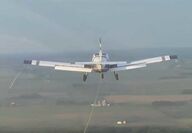
This is #27 in a series of "non- traditional" pilot occupations I've done over the years. All too often, we think of an aviation career as "you could be a Charter pilot, Corporate pilot, Airline pilot, Ag pilot, etc. There is SO MUCH MORE to aviation beyond these traditional pilot positions, and I've tried to highlight the more "unusual" over the years. Many glider tow pilots are also sailplane pilots. There is no requirement to be a glider pilot to tow gliders, but you do need to know... Full story
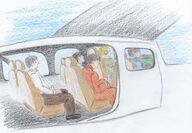
This is #26 in a series of "non-traditional" pilot occupations I've done over the years. All too often, we think of an aviation career as "you could be a Charter pilot, Corporate pilot, Airline pilot, Ag pilot, etc. There is SO MUCH MORE to aviation beyond these traditional pilot positions, and I've tried to highlight the more "unusual" over the years. Back when light airplane charter was a popular business, we used to get requests to transport prisoners by air, using General Aviation aircraft.... Full story
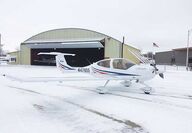
I take every opportunity to fly unique aircraft-but in flying for 56 years, and 52 years in the FBO business, new types to fly don't present themselves very often. Corey De Jac showed up at our affiliated flight school-Accelerated Aviation Instruction-for a Flight Instructor-Initial course, and brought his company Diamond DA-40 Star aircraft along for the ride. Corey is one of the pilots for Huber & Associates, based in York, Pennsylvania. The company has 2 Diamonds, a Piper Mirage, and a... Full story
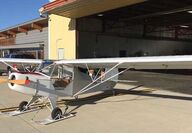
It's getting harder and harder to find a new type aircraft to fly. I don't count it as flying a unique type unless I do a takeoff or landing-no holding the controls enroute. Doing a takeoff or landing lets me experience nearly the full range of the aircraft handling-on the ground-the takeoff as the wing gathers lift-climb-cruise-glide, and the landing. Some aircraft owners are reluctant to allow someone to make those takeoffs or landings. I need not have worried about this one-it's a single-plac... Full story
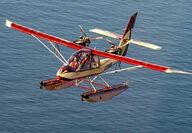
I asked Jim if he would mind putting the aircraft on one of the local lakes-there were a few whitecaps on the lake, but he agreed. Again-Jim performed the entire litany of the checklist- aided and abetted with the gear warning voice system, and as we approached the water, the airspeed was read out aurally about once a second by the flight management system. The touchdown was nose-high and short-the rough water was not a problem. Jim taxied in full- displacement mode, and didn't even have to... Full story
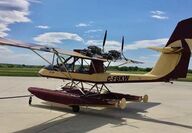
Even after 56 years of flying and thousands of hours, I still love to fly new types of airplanes, but it's getting more and more difficult to find an airplane type that I haven't flown before. I only count it as a new model if there is a substantial change from its predecessors-not like changing model years in new cars. With the low production rates of aircraft today, more often than not, I have had to go to the Experimental aircraft to find a completely new type. Thus, I was really excited when... Full story
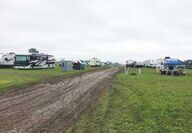
For the third year in a row, this will be one for the record books. Last year's attendance was up about 4%, and I'm guessing this year will be up about the same. We arrived with our motor home Saturday afternoon, about 1 1/2 hours after light rain started falling. The open camping spots were at the extreme south end of Stits-near the exit/dump station. The side roads were muddy, and I barely made it in (more about that later) but within minutes, people were getting stuck. Never mind, we were at... Full story
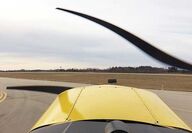
Flying the Denali Scout Though built on the same type certificate as the original Scout, there are enough changes for me to consider this as a different type/model rating. The tail, the aileron spades, the landing gear, the electrical system, the prop, and the landing gear are all different. Long-time readers know that I don't count a new type unless I make a takeoff or landing in it-no "holding the controls." Making a takeoff or landing lets me feel the aircraft in a wide range of speeds and co... Full story
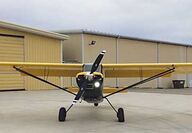
I love Champion ("Champ") airplanes-from the Aeronca Defender of WW II-to the higher-horsepower airplanes of the 50s-to the advent of the 100 hp Citabria of the 1960s-to the various iterations of the 150 hp aerobatic and bush planes-to the Decathlon series with symmetric airfoils and inverted system-to the original Scout bushplane-I've flown (almost) all of them -including the Champ with a nose wheel, the Tri-Champ. I HAVE missed two rare models-the twin-engine Champion Lancer-which hung 100... Full story
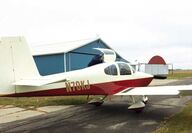
Five days later, we got a chance to finish the flight check. Kirk came to Albert Lea so we could trade time-he wanted to fly my Lake Amphibian.Since the engine was still warm, it took no time at all to fire up and get ready for takeoff-except that we had to wait about 2 1/2 minutes for the glass displays to come up to speed. This time, we had a 15 knot wind blowing right down the runway.The RV accelerated quickly in the 50 degree temperatures, and we broke ground in about 500 feet with no specia... Full story
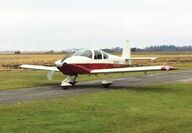
This isn't the first time I've flown the RV-10-but it is the one that counts! I don't count "flying" an aircraft unless I make a takeoff or landing in it-no "holding the wheel in cruise." Making a takeoff or landing lets you experience the aircraft over a wide range of speeds and configurations-different power loadings, and different glide speeds and angles. It gives a measure of aircraft feel-the effects of controls in handling crosswinds, for example. Owner Kirk Hiner and I had flown the... Full story
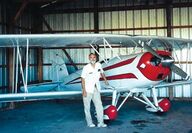
Lee purchased an Aviat Husky to tow gliders for his operation at Osceola, Wisconsin. He still loved to fly aerobatics, so he purchased a Great Lakes biplane. Lee was one of the first people in the U.S. to obtain all 7 categories of instructor ratings. Years later, there are still only a handful of pilots to have done so (Lee "outranks" me-I don't have the gyroplane ratings, though I HAVE flown them without passengers on my helicopter rating). With dogged determination, Lee kept after the FAA... Full story
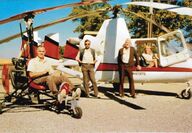
Lee was born on December 17, 1933, 30 years to the day after the first flight by the Wright Brothers. He joined the USAF in 1951, and after being discharged in 1955, went to Parks College of Aeronautical Technology in St. Louis, graduating with a BS in Aircraft Maintenance Engineering. Lee was hired by Northwest Airlines in October 1958 and moved to Minnesota, and lived here ever since. Lee was one of those people who keep crossing our lives-like the characters in old Hollywood epics like "How... Full story